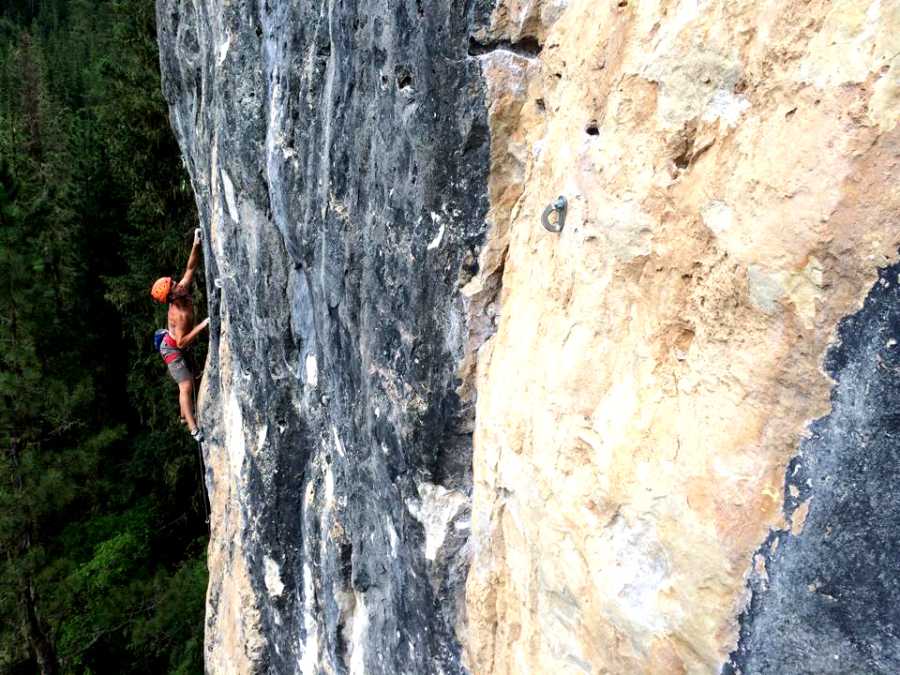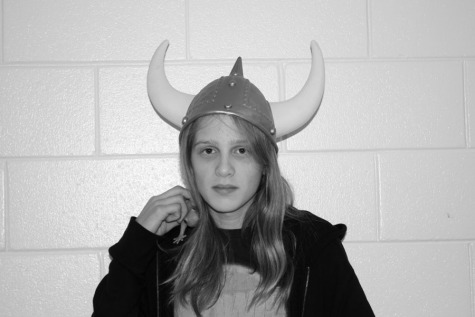Climbing Finds a Unique Niche in Minnesota
“I believe the warm, positive and encouraging nature of the sport and its culture is very alluring to those who have had a small taste.” Tyler Hoffart said about his experience with rock climbing.
October 6, 2014
“I was kinda that kid who would climb on everything when he was young. I’d scare all the parents at the playground get hurt, and it was good.” Isaac Duncan, a sophomore, said. He has been climbing since he could walk. Little did his parents know that 10 years after he started, he would have traveled the nation to climb, and participated in more than 50 tournaments. And he’s not alone. The Twin Cities harbors a large community of climbers, and they have a distinct culture that sets them and their community apart from other sports.
Sport climbing is different from just climbing up a mountain. It takes place in a controlled, usually indoor environment on a route that is set by the appropriately named route-setter. Performance is gauged by how many points you have when you either finish the route or fall. Points are rewarded based on the difficulty of moves executed and certain holds you get to.
Minnesota is home to a number of climbing gyms, including Vertical Endeavors, which has indoor climbing facilities in Minneapolis, Saint Paul, and Duluth, the Midwest Climbing Academy, and the MN Climbing Co-op. Outdoor climbing spots in Minnesota are also popular, and exist in Taylor’s Falls, Redwing, and elsewhere.
Sport climbing is an international phenomenon, with climbing gyms existing worldwide and 56 countries competing in the 2012 sport climbing world championship. These are major accomplishments considering sport climbing is a relatively new sport, founded by a small group of dedicated pioneers in the early 1980s.
According to Duncan, it was founded with an adventurous and anti-authoritarian mindset that persists to this day. “It really started off with this kind of ‘we’ll do what the heck we want, how we want it’ personality.” he said. “And I think although climbing has become more regulated in ways, it still has that.” Tyler Hoffart, the head coach of the Midwest Climbing Association said “Rock climbing is steeped in a rich history of adventure. Many times, the person new to the sport is someone who is looking for something different, something that looks fun and exciting and that which will push them out of their comfort zone.”
Something that draws many climbers to the sport is it’s participants’, in the words of Hoffart, ‘full body and mind engagement.’ “Some call it the ZONE. One reason that climbing is incredibly addictive: it provides a platform for you to get lost in. Because of its requirements from both the physical and mental sides, climbing is fully engaging and pulls you in. Everything else melts away. You can forget about all your worries and anxieties for the day and just go climbing.” he said.
“Climbing teaches you how to work through problems because so much [of it] is failure.” Duncan responded. “There are routes I’ve been practicing for 3 or 4 years and will try many times a week, you know, go out there and just fail, fail, fail, and eventually you teach yourself to keep on working towards success. … there’s definitely times on the wall when you are the only person responsible for your own life and there’s nothing else stopping your death – or serious injury- except your own actions. I think that’s a feeling and responsibility for yourself that you’re very rarely able to get out of any other sport. It is really cool and to be able to know that you just kept yourself alive through something very difficult.”
Hoffart had similar things to say. “As climbers, we tend to push ourselves physically and mentally. We want to progress, to improve. With that goal in mind, we meet failure often. At times we will begin working on a route that at first seems impossible. With the proper amount of hard work, rehearsal and study (and heavy doses of failure), we are able to put the project together, we are able to do it successfully.”
One defining characteristic of sport climbing is how much time is actually spent not climbing. In the short climbing documentary Hidden Peak, one climber remarks “[When you’re climbing] outside, you’re usually camping so aside from the actual climbing during the day you’re also cooking breakfast together and then hanging around the campfire afterwards, so it’s a pretty rich activity.” Duncan also said “With climbing, there’s a lot of downtime. There’s a lot of time you spend not climbing.”
This time has become a driving factor of the evolution of climber culture and community. Common group climber activities include hacky sacking and slacklining, a unique sport in which participants perform tricks or fight on a wide rope strung between two points, often trees. Now often played as a popular team-building activity, Slacklining was originally invented by climbers Alan Grosowsky and Jeff Ellington in 1979.
Although being an individual sport, the Minnesotan climbing community is incredibly close-knit and is currently proving they can come together by successfully raising money to buy land near Sandstone, MN. “This private land had for years been a bouldering destination and when it came up for sale, climbing was instantly put into jeopardy.” said Hoffart.
Climbing is a unique sport with an incredibly dedicated community in Minnesota. “I believe the warm, positive and encouraging nature of the sport and its culture is very alluring to those who have had a small taste.”






